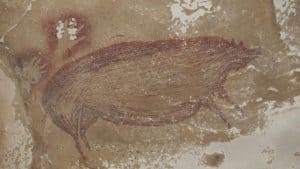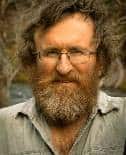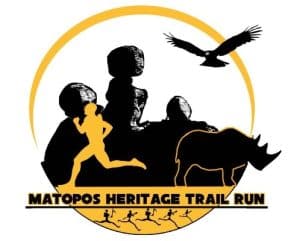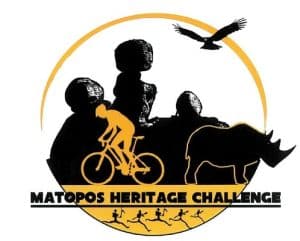1 – ANNUAL GENERAL MEETING
Following our 28th Annual General Meeting held on 22nd November 2020, the Committee was returned en bloc:
Chairman Gavin Stephens
Vice-Chairman Neil Rix
Treasurer Jean Whiley
Secretary Gaynor Lightfoot
Members Verity Bowman, Moira Fitzpatrick, and Cindy Sellick
Whilst we greatly appreciate the continued hard work carried out by the committee, fresh faces would bring new ideas and so would be most welcome.
The meeting agreed a minor amendment to the Constitution, as shown below:
| Clause A-2 wording before amendment | Clause A-2 wording after amendment |
| The Chairman may serve no more than five consecutive years in office, but may be elected chairman again in subsequent years. | The Chairman may serve no more than five consecutive years in office, unless no alternative candidates are proposed, but may be elected chairman again in subsequent years. |
2 – HONORARY MEMBERS
The Annual general Meeting unanimously elected three new Honorary Members. These were Dr “Woody” Cotterill, Dr Moira FitzPatrick and Mrs Julia Dupree. All three were recognised for their contribution to the scientific body of knowledge following the publication of the “The Natural History of the Matobo Hills”. This book published by the Matobo Conservation Society in 2018 was edited and drafted by the three nominees and represents the most up-to-date record on the natural history of our special hills.
3 – EDITORIAL
The New Year opened both sweet and sour – sweet following the wonderful steady rains that have turned the Matobo Hills into a tropical water land, and sour with the implementation of a renewed National Health Lockdown. Fortunately, this time around we were still permitted to visit National Parks and National Museums, and so with these facilities still open, members have been able to travel out to the park and enjoy the rains. Streams are gushing, rivers are raging, waterfalls are roaring, and the dams are spilling. Maleme dam which was empty at the beginning of December, was full and spilling by mid-month! Hopefully the work carried out on the dam will provide enhanced water security and fix the leaking wall. Time will tell. In Bulawayo, the December rainfall was the heaviest in twenty years, and at the time of writing, more rain is promised.
Dirt roads within both the Park and Communal Lands are not in good shape after the relentless rains, so some areas are not accessible. If you are going exploring we suggest you check first!
Those who have managed to get to Lumane and Mshashasha (Cascades) water falls have been well rewarded.
4 – RAINFALL
After three years of drought the rains have returned. There has been significant relief in the western hills where very good falls have been measured. As a result, the rivers are flowing, dams spilling (including Maleme Dam), waterfalls roaring again, and every valley full of the sound of tumbling streams. Rainfall to date – Eastern Matopos 715mm; Central Matopos 605mm; Western Matopos 796mm; Bulawayo 762mm.
5 – NEXT EVENT
Date 14th February 2021
Venue Amadzimba Cave
Meet 08:00am, Cresta Churchill Hotel
Travel Trucks are preferred and if you have a 4×4 that may be helpful but not essential. We suggest traveling to Matopo Mission via the Matopos Rd, Fort Usher and then Old Gwanda Rd.
From Matopo Mission the Old Gwanda Rd is in good shape until close to Gulabahwe but we may travel down the Sotcha Loop road which will be slow – but very picturesque.
Details – There will be lots of water so be sure to bring your costume! After visiting the cave. some folk hope to hike onto the Amadzimba Pearls, a lovely swimming pool beyond the cave, so a packed lunch might not be a bad idea for those choosing to walk on. This is a lengthy walk well beyond the cave,
This is one of the great caves of the Matopos, and has excellent rock art, and Bantu art. We will have experts in attendance to debate the origin and meaning of the rock art. The walk from the car park to the cave is fairly short, with just a push to get into the cave itself. It’s an easy return to the cars for lunch.
NOTE – at the time of “going to print” the National Lockdown has been extended to 15th February. Under these regulations visits to National Monuments are permitted subject to health controls. Unless these regulations change, we will proceed with the outing.
6 – REPORT BACK
A good number of members gathered at Madingazulu Dam for our 28th Annual General Meeting. Once the formalities were taken care of and tea enjoyed, we travelled up to Nswatugi cave. The new information panels, that replaced the burnt down site museum, were inspected and the new toilets christened by some. The Chairman, Mr Gavin Stephens, handed over the new facilities to the Director of National Museums, Dr Moira Fitzpatrick, in a brief ceremony.
7 – ZIMPARKS APPOINTS TOP ECOLOGIST
Acknowledgment to the Sunday Mail
Zimbabwe Parks and Wildlife Management Authority (ZimParks) has appointed ecologist Professor Edson Gandiwa to the post of director of research to strengthen and broaden the Authority’s conservation and management strategies. Before his appointment, Prof Gandiwa was the executive dean at the Chinhoyi University of Technology (CUT)’s school of wildlife, ecology and conservation.
ZimParks spokesperson Mr Tinashe Farawo said the appointment was in line with international best practice. “The appointment is in line with recommendations from a recent study commissioned by our partners, the European Union, which sought to review our operations,” said Mr Farawo. “The study came up with recommendations on how we can improve our operations and become more efficient, and the appointment of a full-time director of research was one such recommendation. “Prof Gandiwa will be our go-to man when we attend highly technical international meetings such as the Convention on International Trade in Endangered Species meetings.”
Prof Gandiwa holds a BSc (Hons) in Environmental Science and Health (First Class, National University of Science and Technology, 2004), a MSc in Tropical Resource Ecology (Merit, University of Zimbabwe, 2007) and a PhD in Wildlife Conservation and Management (Wageningen University and Research, the Netherlands, 2013). He has authored and co-authored over 140 peer-reviewed scientific publications in national, regional and international journals. He has contributed to several projects at national, regional and international levels, including the revision of protected area management plans, development of the Zimbabwe Tourism Master Plan, the recent Communal Areas Management Programme for Indigenous Resources (CAMPFIRE) review, Regional Assessment report on Biodiversity and Ecosystem Services for Africa under the Intergovernmental Science-Policy Platform on Biodiversity and Ecosystem Services (IPBES), and global Land Degradation and Restoration Assessment Report under IPBES.
He has successfully supervised four PhD graduates, among other accomplishments.
8 – ARCHAEOLOGISTS FIND WORLD’S OLDEST ANIMAL CAVE PAINTING IN INDONESIA
Jonathan Amos, Science Correspondent, BBC
Archaeologists have discovered the world’s oldest known animal cave painting in Indonesia – a wild pig – believed to be drawn 45,500 years ago.
Painted using dark red ochre pigment, the life-sized picture of the Sulawesi warty pig appears to be part of a narrative scene. The picture was found in the Leang Tedongnge cave in a remote valley on the island of Sulawesi. It provides the earliest evidence of human settlement of the region.
“The people who made it were fully modern, they were just like us, they had all of the capacity and the tools to do any painting that they liked,” said Maxime Aubert, the co-author of the report published in Science Advances journal. A dating specialist, Mr Aubert had identified a calcite deposit that had formed on top of the painting, and used Uranium-series isotope dating to determine that the deposit was 45,500 years old.
This makes the artwork at least that old. “But it could be much older because the dating that we’re using only dates the calcite on top of it,” he added. The report says that the painting, which measures 136cm by 54cm (53in by 21in), depicts a pig with horn-like facial warts characteristic of adult males of the species. There are two hand prints above the back of the pig, which also appears to be facing two other pigs that are only partially preserved.
Co-author Adam Brumm said: “The pig appears to be observing a fight or social interaction between two other warty pigs.” To make the hand prints, the artists would have had to place their hands on a surface before spitting pigment over it, the researchers said. The team hopes to be able to extract DNA samples from the residual saliva as well.
The painting may be the world’s oldest art depicting a figure, but it is not the oldest human-produced art.
In South Africa, a hashtag-like doodle created 73,000 years ago is believed to be the oldest known drawing.
Cave paintings as old as those found in Europe have been found in Indonesia, raising new questions about early mankind and the development of art in prehistoric times. Sulawesi is in a key location. It’s the largest island in a group that scientists often refer to as Wallacea after the great 19/20th Century naturalist Alfred Wallace. The group sits on a dividing line, either side of which you find very different animals and plants.
But Wallacea’s significance also is that it must have been a stepping stone for modern humans as they made their way to Australia. We know they were on that landmass some 65,000 years ago, so it’s reasonable to assume they were also on Sulawesi at the same time or even earlier.
This raises the tantalising prospect of there being figurative art out there, either on Sulawesi or the immediate islands, that’s older still than 45,500 years old. The limestone hills about an hour’s drive from Makassar have innumerable nooks and crannies, just like the cave at Leang Tedongnge.
9 – DEMOLITIONS FOR WETLAND SETTLERS
With acknowledgement to NewsDay, Monday January 18. 2021
People that built houses and businesses on wetlands must expect demolitions after the Environmental Management Agency (EMA) ordered them to vacate the land before it institutes prosecutions or demolitions of the buildings once a new law on preservation of wetlands is gazetted. Some of the places that could be affected by the mass demolitions are Harare and Chitungwiza. EMA is mandated through the Environmental Management Act (Chapter 20:27) section 113 to prosecute anyone found carrying out any activity that is likely to cause degradation of a wetland without authority from the agency. The new development comes as the environmental agency yesterday said it had observed with keen interest the flooding of houses built on wetlands in Harare, Bulawayo and Gweru. Already, demolitions have been executed in Harare and Chitungwiza, while there are reports that around 11 000 residential and commercial buildings that were built on illegally-owned land would be demolished in the dormitory town. Harare is said to have over 30 000 illegal settlements, comprising mostly land which was illegally sold by barons. Last month, about 200 illegal structures were demolished in Budiriro high density suburb. EMA education and public relations manager Amkela Sidange said people who settled on wetlands should move away before the law took its course.
10 – PROFILE – HONORARY MEMBER
We will feature our three new Honorary members in this and following Newsletters. We kick off with Dr Fenton “Woody” Cotterill.
Fenton (Woody) Cotterill BSc (Hons), MSc (Tropical Resource Ecology), PhD is a biologist and geobiologist, based in the Western Cape, South Africa. Born in Shurugwi, central Zimbabwe, he attended Falcon College, Esigodini. He was previously Curator of Mammals (1992-1997) and Principal Curator of Vertebrates (1997- 2003) in Bulawayo’s Natural History Museum of Zimbabwe. He has published widely in the biogeography and taxonomy of African vertebrates, and the evolution of the continent’s ecosystems and geomorphology: particularly on the origins of the Congo and Zambezi rivers. His studies of African vertebrates in museum collections, worldwide, alongside fieldwork across central Africa, have focused on African mammals (many on bats and antelopes). They have included descriptions of 8 new species of mammals, and recent multi-authored include the descriptions of 14 new species of killifishes (Genus Nothobranchius).
Over the two decades, his research interests in evolutionary biology and geomorphology have broadened to straddle the life and earth sciences, focusing on phylogeographic studies of indicator species (fishes, birds and mammals) to decipher the evolution of Africa’s landscapes. In expanding his biogeographical research into the realm of geobiology, Cotterill has pioneered the new interdisciplinary science of geoecodynamics, which exploits a novel body of evidence in the genomic record of Earth history. This historical information in DNA sequence data underpins refined explorations toward deciphering the dynamics of biodiversity, palaeoenvironments and landforms in the context of the evolving earth system. Alongside many popular publications, he has published over 124 publications in symposia and peer-reviewed journals. These include detailed contributions to the authoritative 6 Volume Mammals of Africa.
11 – SOCIETY CALENDAR OF EVENTS FOR YOUR DIARY
14th February 2021 Field Trip to Amadzimba cave
24th – 28th March 2021 Matopos Heritage MTB Challenge
TBA MCS Field Trip in May
27th – 29th August 2021 Matopos Heritage Trail Run
TBA MCS Field Trip in September
TBA MCS Annual General Meeting in November
26th – 28th November 2021 Matopos Classic
12 – MEMBERS NOTEBOOK
SUBSCRIPTIONS
Subscriptions for the year 1 October 2020 to 30 September 2021 fell due on 30 September 2020. Please ensure that your subs are up to date. There has been no increase in rates.
US$ 20 Individual/Family
US$100 Corporate
The AGM resolved that we will accept only US$ but we will accept Zimbabwe Dollars at the bank rate on the day of payment. We would prefer the former if you are able to pay in US$. However, we appreciate that the extraordinary rate of inflation may challenge many of our members and so we would ask you to please consult with the Treasurer if necessary. If you need any information, please contact the Chairman on matoboconservatiosociety@gmail.com
MCS APPAREL
You are reminded that the Society has a stock of fleece sleeveless jackets, in olive green with orange MCS logo. They are ideal for the cool mornings and evenings. These are available at $20 each. We still have stocks of hats and caps at $10 each. CD’s and shopping bags are also available at $5 each.
WEB SITE & FACEBOOK
The website for the Society www.matobo.org has been updated, so make some time to visit the site. Contributions are welcome. We have also revamped our Facebook page “Matobo Conservation Society”. We continue to update our Facebook page; we welcome any contributions from Members. Go to “Matobo Conservation Society” on Facebook, and “like” the page to ensure you get regular updates. Over 1,000 people are following us on Facebook.
NATURAL HISTORY OF THE MATOBO HILLS
This MCS publication is available both at the Natural History Museum, or from the Secretary.
13 – VOLUNTEERS
In order to successfully host the annual Matopos Heritage MTB Challenge, we offer the service of transferring participants’ motor vehicles from Maleme Rest Camp to Camp Dwala on Friday 26th March. This transfer takes place as the cyclists ride a 68km course to arrive at Camp Dwala. Volunteers are collected from Cresta Churchill taken to Maleme where they are allocated a vehicle, drive to Camp Dwala and are returned to Crest Churchill before lunch. An interesting morning out for many. This year we have a record entry, and so are looking for more drivers than ever before – so if you can assist please contact 0772-168-136.
14 – NEW YEAR
We take this opportunity to wish all our members and friends all the best for 2021. It’s going to be eventful!
We trust that our members will take extra care during this ongoing pandemic.
 |  |
| Handover of the Nswatugi display | Hon Life Members Julia Dupree and Moira Fitzpatrick |
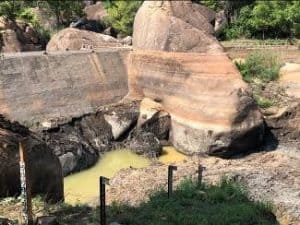 |  |
| Maleme Dam November 2020 | Maleme Dam December 2020 |
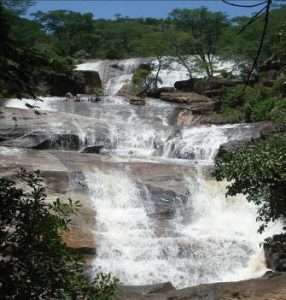 | 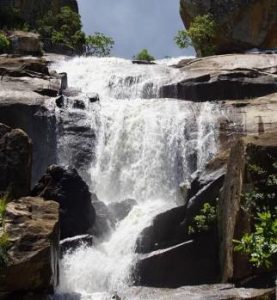 |
| Mshashasha Falls also called Cascades | Lumane Falls |

